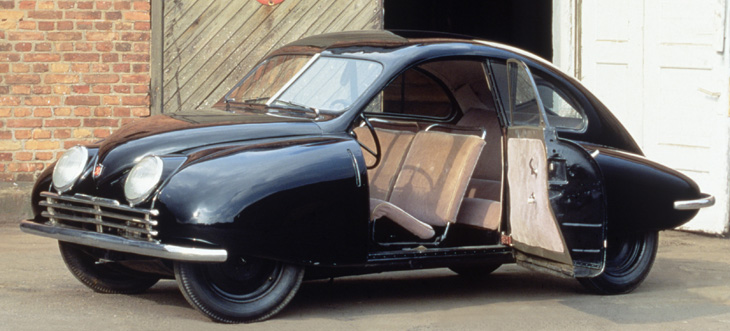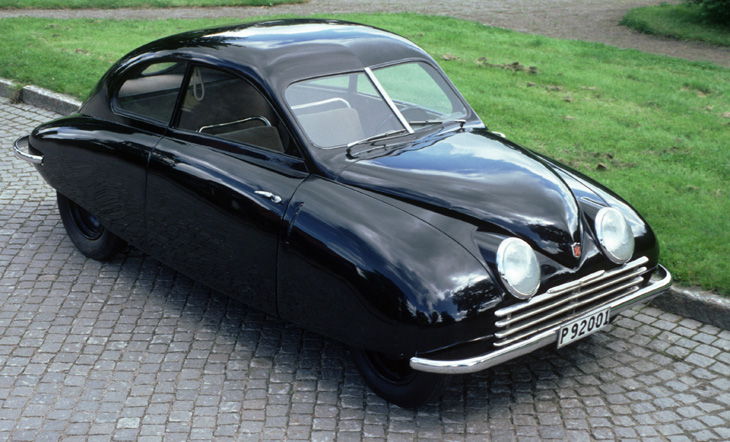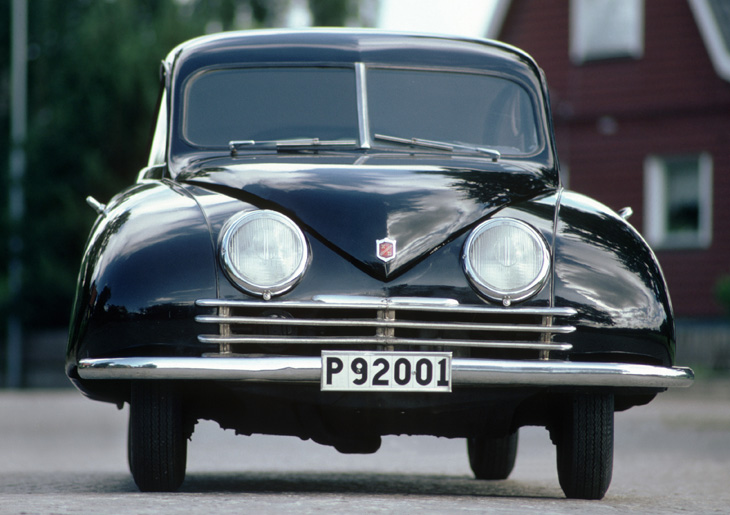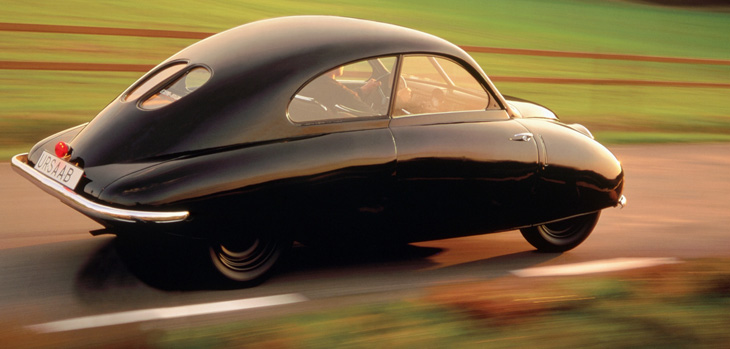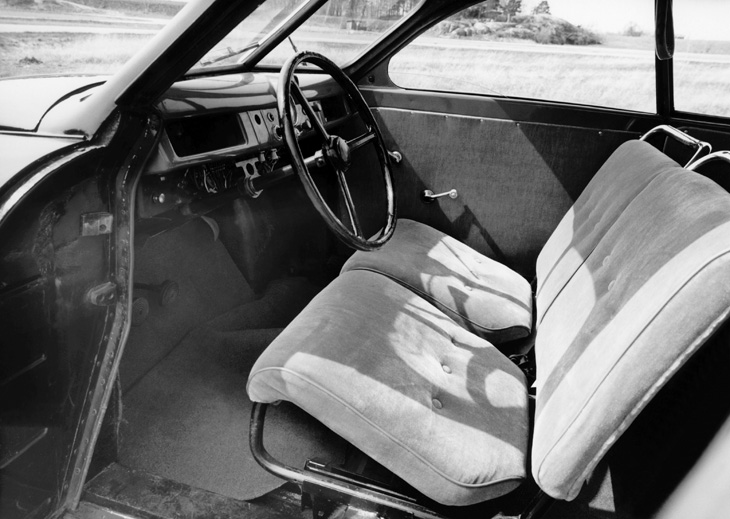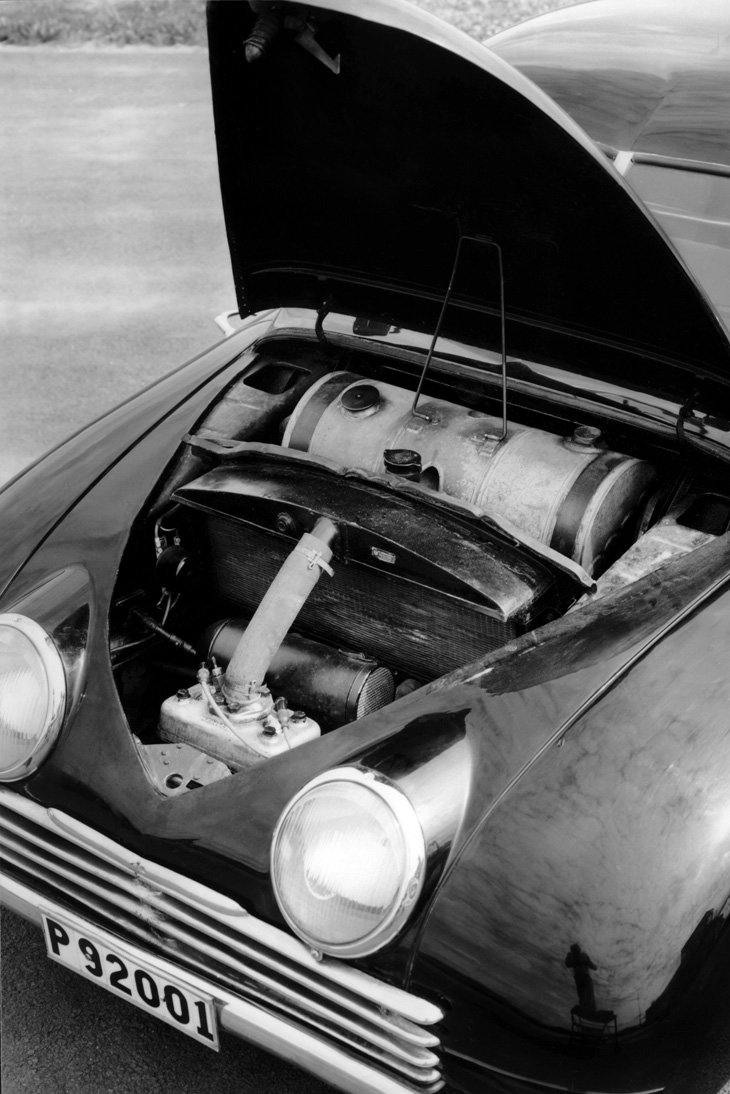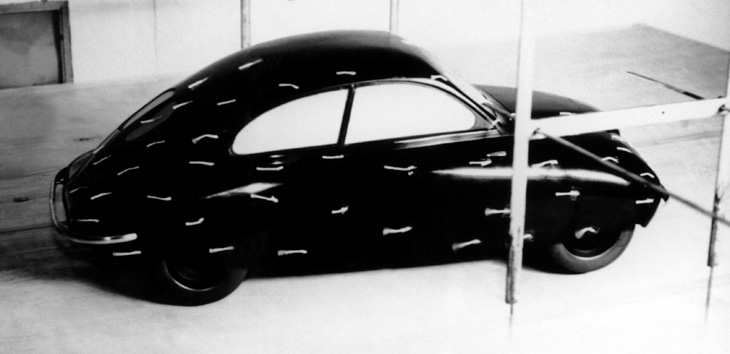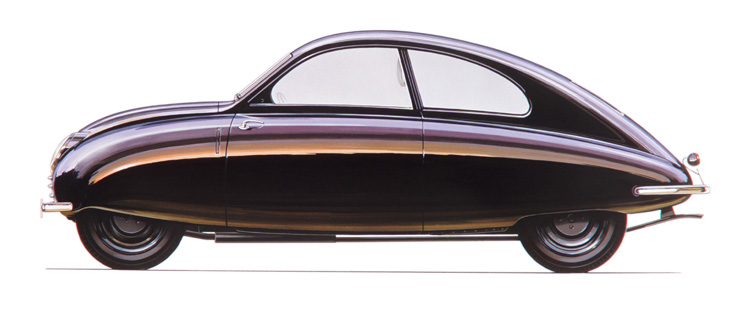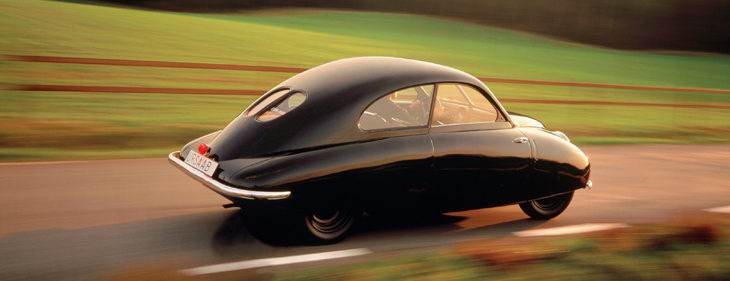|
|
|
|
1946 Saab Ursaab Ursaab is the beginning of the Saab story, ('Ur' is Swedish for original). It was the first automobile to be produced by Saab and was a hand-built prototype given the vehicle designation 92.001. Project numbers 90 and 91 had been allocated to aircraft, so '92' was simply the next Saab number in sequence, even though it referred to an automobile. Saab management had taken the decision to diversify into the automobile business, in addition to manufacturing aircraft. The brief was to design and develop a small, strong and reliable car that people could afford to buy. Senior aircraft engineer Gunnar Ljungström was appointed to lead a project team of just 20 personnel, including designer Sixten Sason. Preliminary drawings for the body were completed by January 1946 and a full-scale model, finished with black boot polish, was completed by 15 April. Panel beaters used a wooden buck placed on a bed of horse manure to get the right 'feel' as they beat the metal panels. Even by today's standards, Ursaab - now a permanent exhibit at the Saab Car Museum - is a spectacular looking compact car. Its aerodynamic, teardrop shape was clearly the work of aircraft engineers who appreciated the importance of low drag, good stability and light weight. The monocoque (shell-like) construction was a true rarity for the period. It was the result of aircraft engineers introducing a fresh approach, developing an automobile without being inhibited by conventional automotive design wisdoms. Safety was, of course, an essential requirement of good aircraft design, so it was only natural that it should be given the same priority in the engineering of cars. This was reflected, for example, in the use of the windshield pillars and body panels for crash impact protection, another uncommon feature at the time in the automotive sector. The adoption of front-wheel drive for sure-footed handling, excellent road holding and efficient space utilization, was also unconventional – a decade before the layout was popularized by the Austin/Morris Mini -
and established a long-held Saab tradition. Ursaab, registered E14783, was ready to drive by the end of the summer and was immediately being road tested day and night. Sister cars 92.002 and 92.003 were also built to extend the test program and these three cars, together clocked up over 530,000 km in road testing - equivalent to 13 trips around the world! Many modifications were made during the development process, including the use of lighter, though less curvaceous doors, and more open front fenders as Sason's original drag-cheating design was prone to trapping snow. Before the specification of the first production model was finalized, a total of 20 pre-production prototypes were built. In 1947, the Saab 92 project team transferred from Linköping to Trollhättan, where tooling for car production was now under way in Saab's aircraft factory. Finally, on 12 December 1949, Ursaab's journey from drawing board to commercial reality was complete when assembly of 92 series production cars began.
|
|
|
|
|
